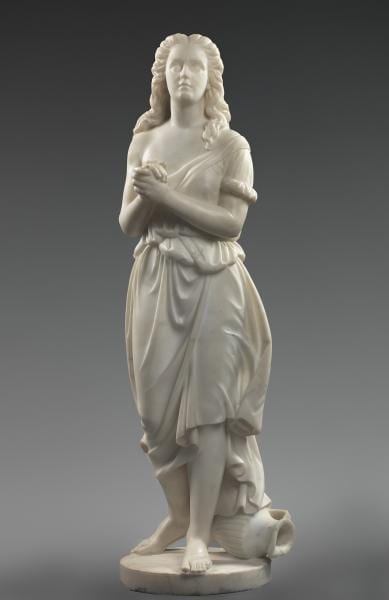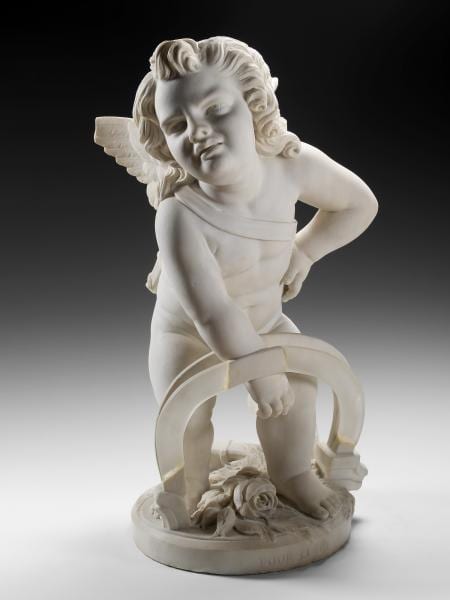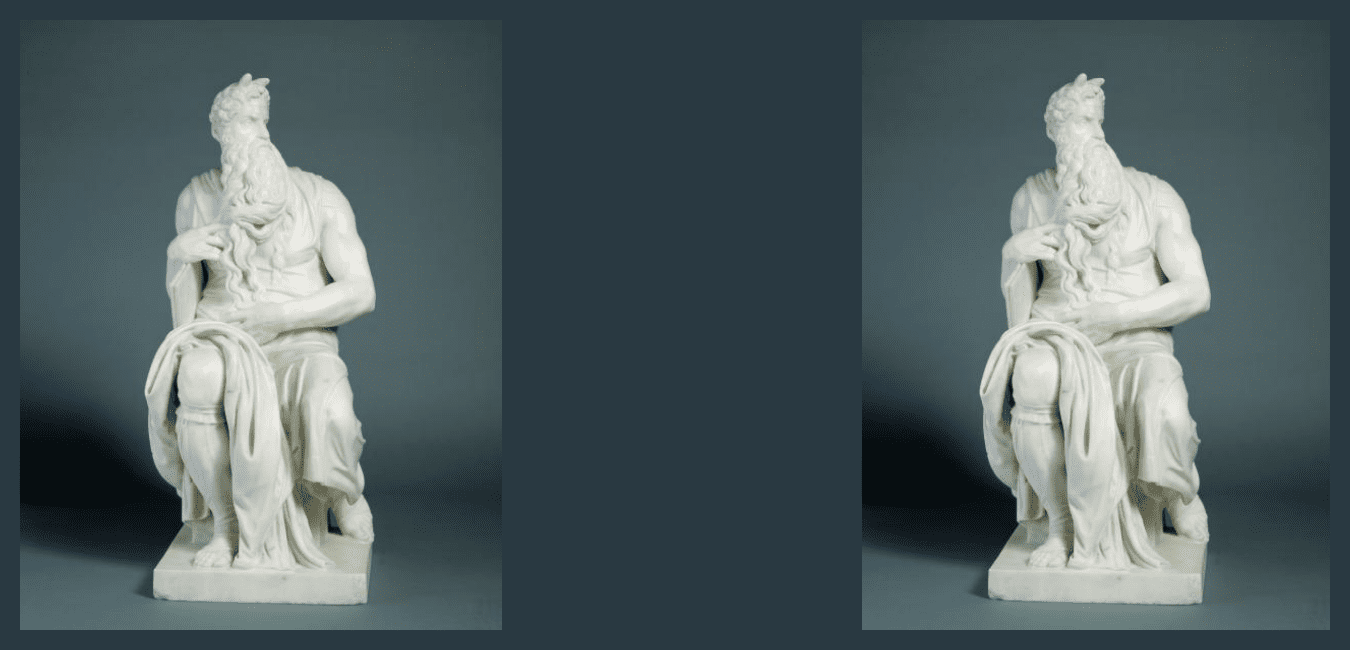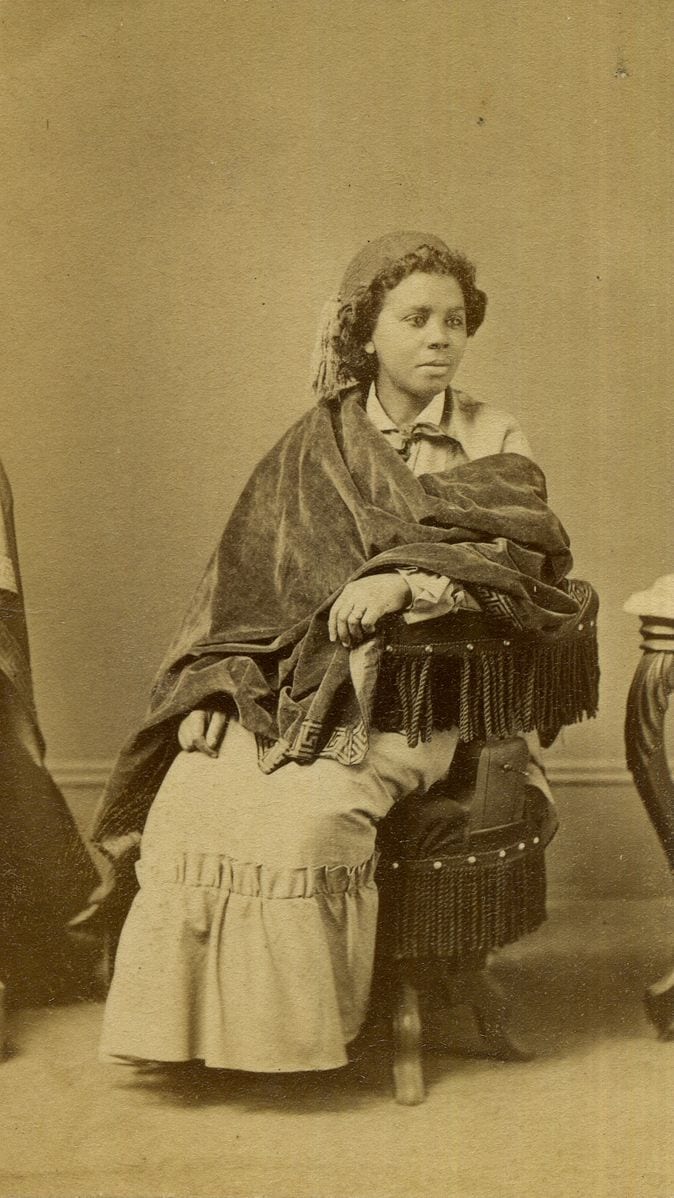How Edmonia Lewis Became an Icon for Minorities?
Edmonia Lewis, also known as Wildfire, was born in Greenbush, New York. The first African-American sculptor at a professional level, her life began in 1843 or 1845 – no one knows for sure.
What we do know is that Edmonia started life at a time when there seemed to be little hope for the success that she gained.
A now-famous African-American, Edmonia’s story is almost as beautiful as the artworks that she left behind. Her life was almost fairytale in nature, and as the Smithsonian Institution points out, we’re not really sure where it all began.
It's possible that she was born in Ohio, but most records state that she was born in New York.
Her father was a free man, and her mother was a Chippewa Indian. But tragedy struck very early for Lewis as she became an orphan by the age of 5.
Her mother’s tribe took her in, and Lewis lived the next seven years of her life as a nomad. She roamed from place to place with her tribe, and it wasn’t until she was 12 that her brother decided to head out to California. He decided that it was time to abandon his tribe, and he became a gold miner at a time when Edmonia may look back at today as riveting.
“Wildfire,” as her tribe called her, owes a lot to her brother Sunrise. You see, when he went out to become a gold miner, he never forgot about his sister. He took it upon himself to ensure that she received the education that she deserved, and he is responsible for funding Edmonia’s education in:
*Albany
*Oberlin College in Ohio
Edmonia attended college in 1859, so it’s very likely that her birth date was 1843 or 1844 rather than 1845 as many sources list. Edmonia decided that college was going to be a turning point in her life, and she decided to leave the name “Wildfire” behind. She changed her name to Mary Edmonia Lewis. But tragedy had struck Mary once again, and her time ended quickly at Oberlin when two roommates accused her of poisoning them. At the time, racism was still very real, and Mary had to go to trial. She was acquitted of the charges, but it didn’t matter, she was severely beaten and she was also accused of stealing art supplies. After all of this turmoil, Oberlin would not allow Edmonia to graduate. Her brother, always a strong supporter of his sister, helped finance her move to Boston and it is here where the true life of the sculptor began.
Edmonia Lewis’ Progression into a Professional Sculptor


Edmonia Lewis, Hagar, 1875, carved marble, Smithsonian American Art Museum, Gift of Delta Sigma Theta Sorority, Inc., 1983.95.178
Lewis’ life was filled with hardships, and like any good story, there is a turning point when all of these hardships turned into victory. Up until now, her life was one that was very difficult, but then she met Edward Brackett, a portrait sculptor who would change her world. Edward would encourage Lewis to begin her limited sculptural studies, and as fate would be, she was a natural. Without experience or even much training, she would start to produce medallion portraits. They sold, and she would make portraits of:
*Wendell Phillips
*Charles Sumner
*WIlliam Lloyd Garrison
But it wasn’t until she made portrait busts of Colonel Robert Gould Shaw and John Brown that her career really came to life. She sold the portrait busts and set out to Europe in 1865. Financing the trip on her own, she traveled to all of the art hotspots at the time: Florence, Paris and London. She decided to settle in Rome, and this was a time when the neoclassical movement was in favor. Determined and strong-willed, Edmonia learned Italian and she would befriend many Americans in Rome at the time. White marble attracted many sculptors and stone carvers to Rome, so the city was a perfect choice for the budding sculptor.
But her history was just in the making. At the time, sculptors would often hire Italians to perform some of their work, but not Edmonia. She was able to complete the majority of her works without any assistance.
Historians contribute this to a few things.
Perhaps she wanted her work to be fully original, and she decided that by using help, it would make her works less original. There’s also the possibility that Edmonia didn’t have much money, so she decided to do what all great artists in history have done: did everything themselves.
It’s this desire and drive that has helped make her an icon for minorities.


Poor Cupid by Edmonia Lewis.via the Smithsonian. Edmonia Lewis, Poor Cupid, modeled ca. 1872, carved 1876, marble, Smithsonian American Art Museum, Gift of Alfred T. Morris, Sr., 1984.156
Her story resonates with anyone that has a dream that is hard to achieve. She knew that despite the circumstances, she would be able to reach her dream through hard work.
She tended to specialize in works that had dual Native American and African-American ancestry. We have, sadly, lost many of her works to time, but we do know that she was able to copy Moses from Michelangelo and also created what many believe to be her greatest work: Hagar.
She did create several mythological subjects during her time, and she also made a minimum of three religious subjects.
While we know that her career made her famous, a lot has been lost to history. Newspapers announced that she came back to the United States in 1872 to go to the San Francisco Art Association, which was holding an exhibit of her works.
She would once again return to the United States in 1875, and then little is known of her life afterwards. What we do know is that work consumed her life, and she never married nor had children.
The last report was from 1911 when she was reported as still living in Rome.
But we know Edmonia’s life has always been somewhat of a mystery, and even her death is not exact. She may have been marked as living in
Rome in 1911, but the majority of sources claim that she died in London on September 17, 1907 at the age of 63.
There are records claiming that she moved to London in 1901, and it may be because neoclassicism started to decline in popularity. The decline in popularity also caused Edmonia’s popularity to decline at the time.
If she did move to London at the time, we’re not sure what happened in the latter end of her life.
Some of her most famous works, include:
*Awake
*Poor Cupid
*Hagar
*General Ulysses S. Grant
*Asleep
*Hiawatha
*Moses
Lewis has been considered one of the greatest African Americans in history, and she is in many top 100 lists. There is a grave in London at St. Mary’s Roman Catholic Cemetery that is dedicated to her. Almost lost in time and in disarray, the grave has since been restored. Bright’s disease was listed as her cause of death on her birth certificate. It wasn’t until 2017, after a GoFundMe campaign was started, that her grave was restored. Oberlin college now has the Edmonia Lewis Center for Women and Transgender People. She has been honored by Google, and the New York Times ran a belated obituary in 2018 for her. The legacy that Wildfire has left behind is one that shows, despite diversity, hardships and racism, she was able to become one of the most influential African Americans in history through her love for art.







